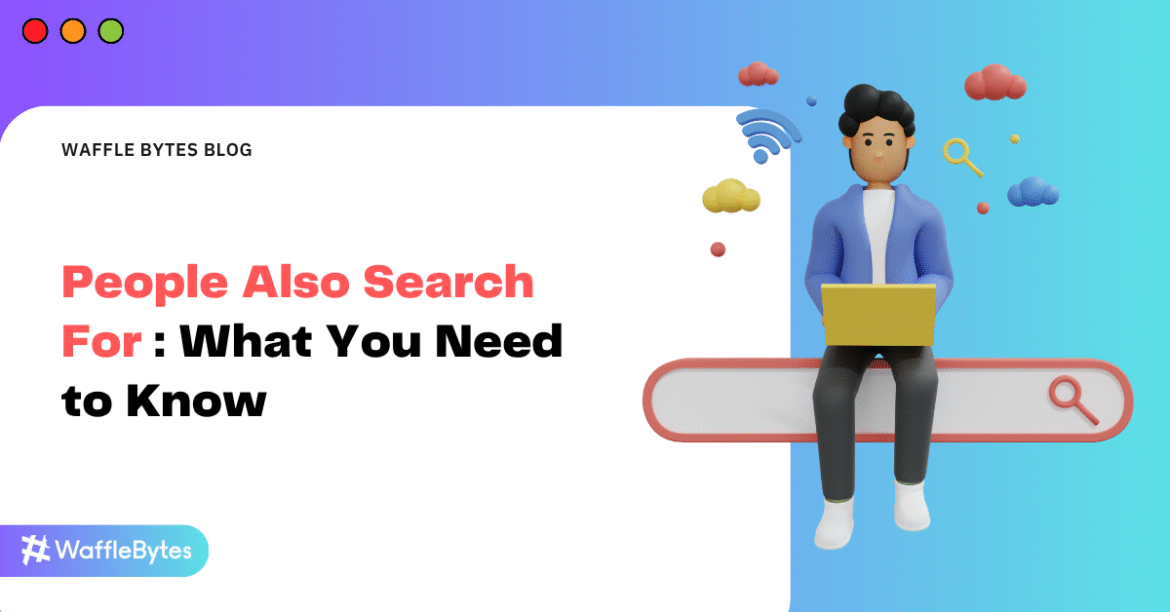People Also Search For (PASF) is one of Google’s most underused keyword discovery tools, often overlooked by even seasoned SEO professionals. Brands that began using these keywords reported a 20% increase in long-tail traffic within three months. These dynamic suggestions evolve continuously, reflecting real user behaviors, making them incredibly valuable for intent-driven content and targeted ads.
What Is People Also Search For and Why Google Shows It After You Click Away
“People Also Search For” keywords appear when users click on a Google search result but quickly return to the search results page. This signals to Google that the initial content wasn’t exactly what the user wanted. Google then displays alternative queries beneath the clicked link, suggesting other relevant topics. Google’s goal is simple: help users quickly find what they’re actually looking for. For marketers, these suggestions offer deep insights into user intent, identifying gaps your content might be missing.
Where Does PASF Appear on Google Search?
These suggestions typically appear just below a search result after a user clicks a link, doesn’t find what they want, and returns to Google. It looks like a small box with related queries beneath the clicked link.
Unlike “People Also Ask” (PAA), which lists specific questions, PASF focuses on broader related searches users might perform after their initial query.
You Can Also Read: Add Me to Search
PASF in SEO: Understanding User Intent
PASF isn’t just another keyword list; it’s a direct window into your audience’s mind. By examining these keywords, you uncover precisely what your audience wants but isn’t currently getting.
This helps you:
- Identify content gaps.
- Understand user intent deeply.
- Craft content directly addressing audience needs.
PASF vs PAA: Which Drives Better SEO Results?
Both PASF and PAA have distinct strengths:
- PASF: Best for discovering related search topics, building content clusters, and expanding keyword strategies.
- PAA: Ideal for crafting FAQ sections and addressing common user queries.
For comprehensive SEO, using both is optimal, but PASF generally offers broader keyword opportunities.
Finding PASF Keywords (Tools and Manual Methods)
Discovering PASF keywords can be done:
- Manually: Perform a Google search, click on a result, quickly return, and review PASF suggestions beneath the link.
- With tools:
- Keywords Everywhere (Chrome extension)
- SEMrush
- Ahrefs
These tools automatically display PASF suggestions with data like search volume, CPC, and competition.
Keywords Everywhere for PASF Insights
Keywords Everywhere is invaluable for PASF research. This Chrome extension shows search volume, cost-per-click (CPC), and competition metrics directly beside PASF suggestions. This gives immediate insights into keyword viability, enhancing your decision-making.
Building Content Clusters & Internal Links with PASF
PASF enables creation of content clusters—groups of related, interlinked content.
For example, if your topic is “organic gardening,” suggestions like “organic fertilizer tips” or “best plants for organic gardens” become supporting articles. This improves internal linking and signals content relevance to Google.
Real Example: One Keyword to Five Blog Ideas
With the keyword “cold brew coffee,” PASF suggestions might be:
- Cold brew coffee recipes
- Cold brew vs iced coffee
- Best coffee beans for cold brew
- Cold brew coffee makers
- Benefits of cold brew coffee
Each topic can become a standalone post, creating comprehensive content around a single keyword.
Mistakes to Avoid with PASF Keywords
Avoid these common PASF pitfalls:
- Keyword stuffing
- Creating duplicate content
- Ignoring user intent
- Not regularly updating content based on PASF changes
Avoiding these ensures a natural, user-focused SEO strategy.
Leveraging PASF for PPC
Using PASF in PPC campaigns enhances ad targeting. These keywords reflect high user intent, enabling precise targeting, reducing costs-per-click, and improving conversion rates.
Keeping PASF Keywords Effective Long-Term
PASF evolves over time. Regularly revisit suggestions and update your content accordingly. Schedule quarterly reviews to adjust content clusters, internal links, and PPC strategies.
Conclusion
People Also Search For is a powerful, often overlooked tool that enhances SEO and PPC.
Start small, think strategically, and use PASF insights to guide your content roadmap for lasting success.

